News: Introducing the New Pedestrian Gates
Mount Auburn Cemetery May 18, 2024 News & Events
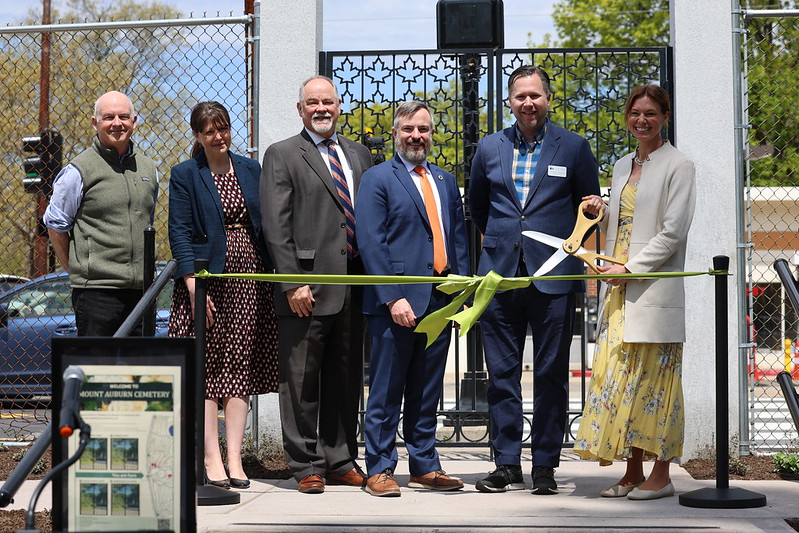
In May 2024 Mount Auburn opened four new pedestrian entrances along Mount Auburn St. These four new entrances, advantageously spaced on either side of the current main gate and close to MBTA stops, and a fifth near a vibrant neighborhood provide more open and welcoming walk-in entrances for people visiting from the surrounding communities and provide safer entrances away from the vehicle entrances at our main gates.
Each of the gates along Mount Auburn Street includes a custom leaf shape.
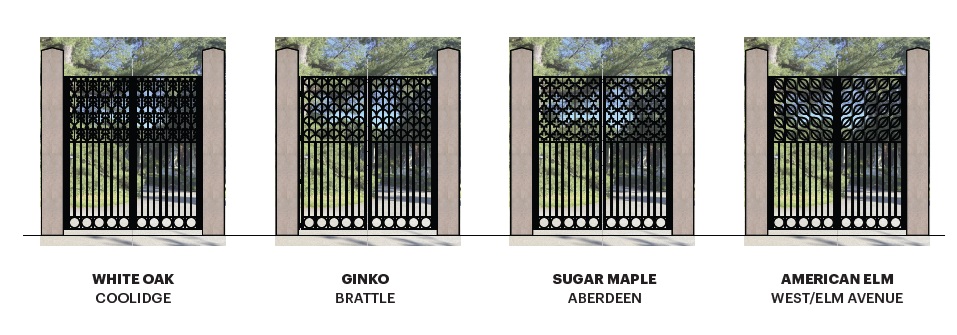
White Oak Gate – Mt. Auburn St. @ Coolidge Ave.
Ginkgo Gate – Mt. Auburn St. @ Brattle St.
Sugar Maple Gate – Mt. Auburn St. @ Aberdeen Ave.
American Elm Gate – Mt. Auburn St. @ Belmont St.
In addition to the gates along Mount Auburn Street there is a fifth gate newly opened to the public pedestrian gate on Coolidge Ave. close to Auburn Lake and across the street from Cambridge Cemetery!
All Gates include convenient bike racks. And the gates close one hour before the main gates.
Pedestrian Gates
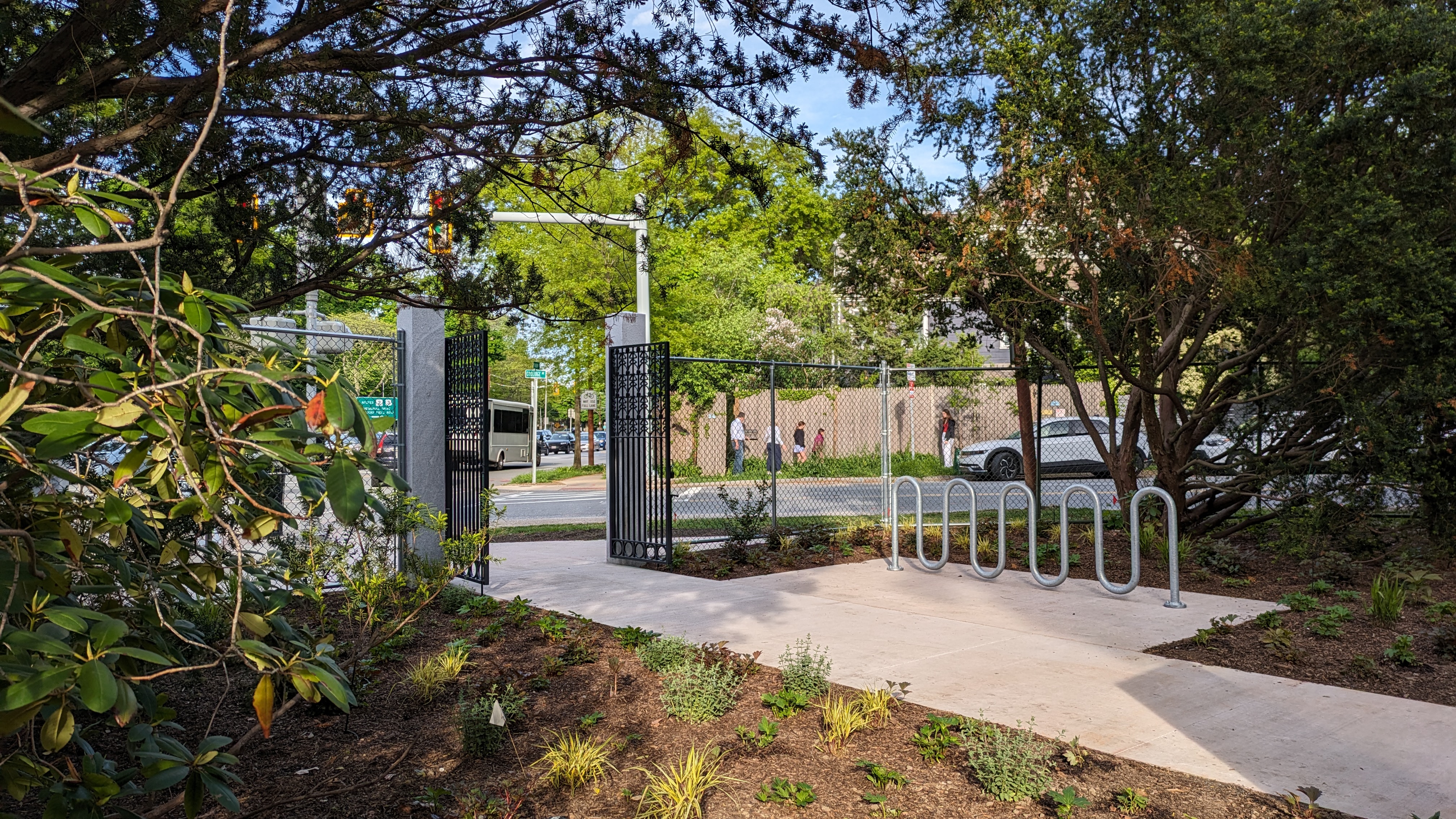
White Oak Gate – Mt. Auburn St. @ Coolidge Ave.
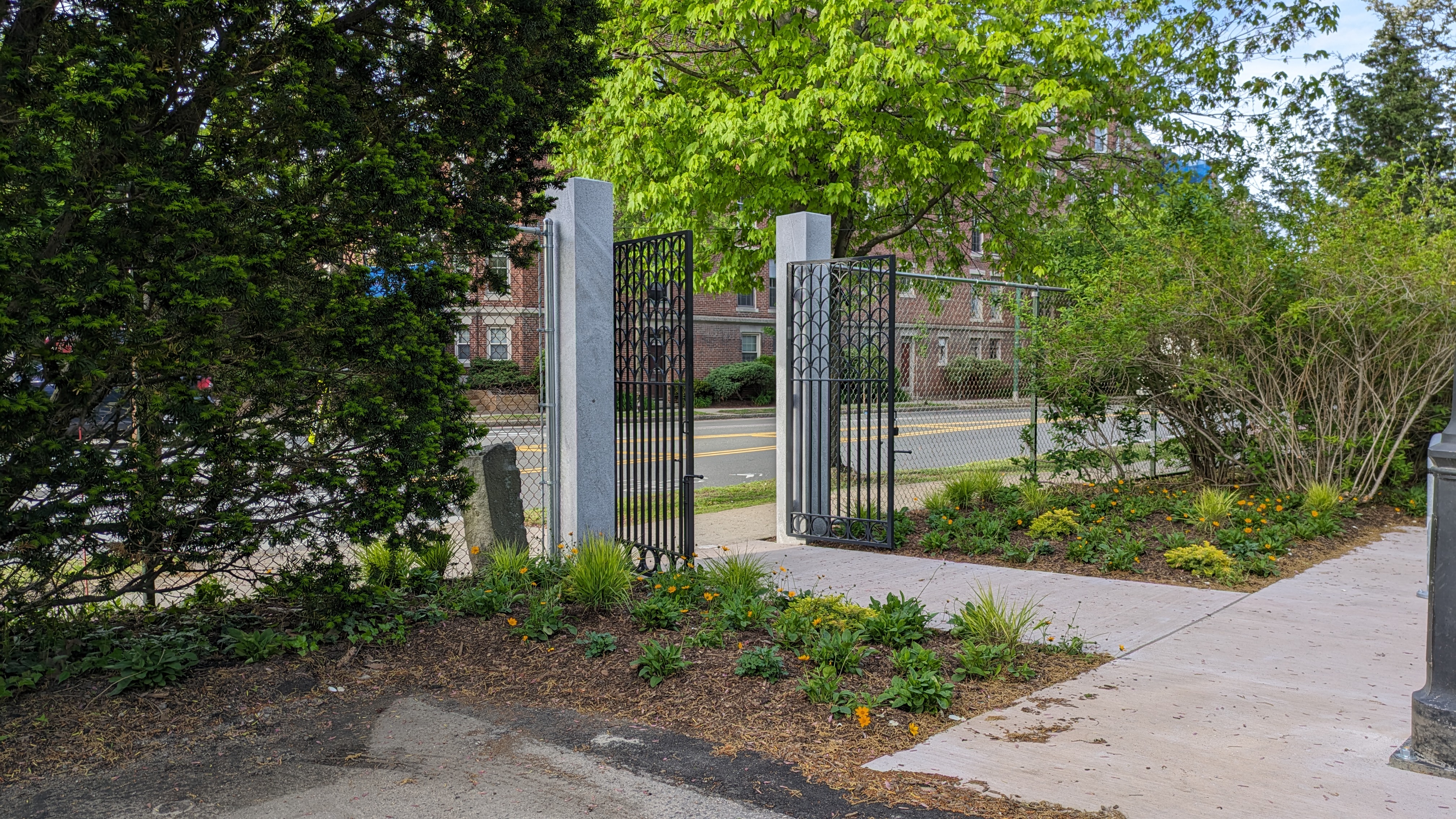
Ginkgo Gate – Mt. Auburn St. @ Brattle St.
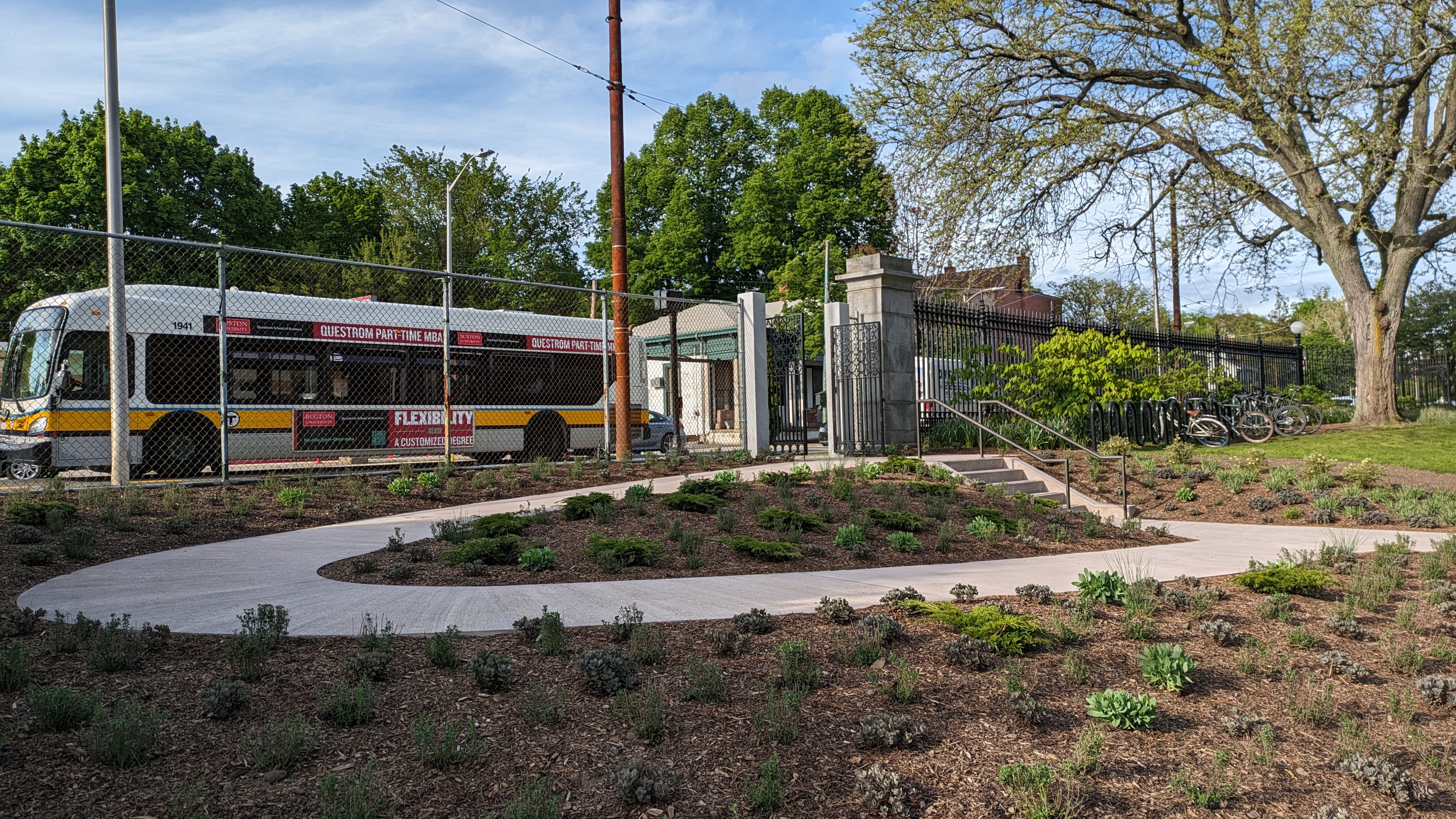
Sugar Maple Gate – Mt. Auburn St. @ Aberdeen St.
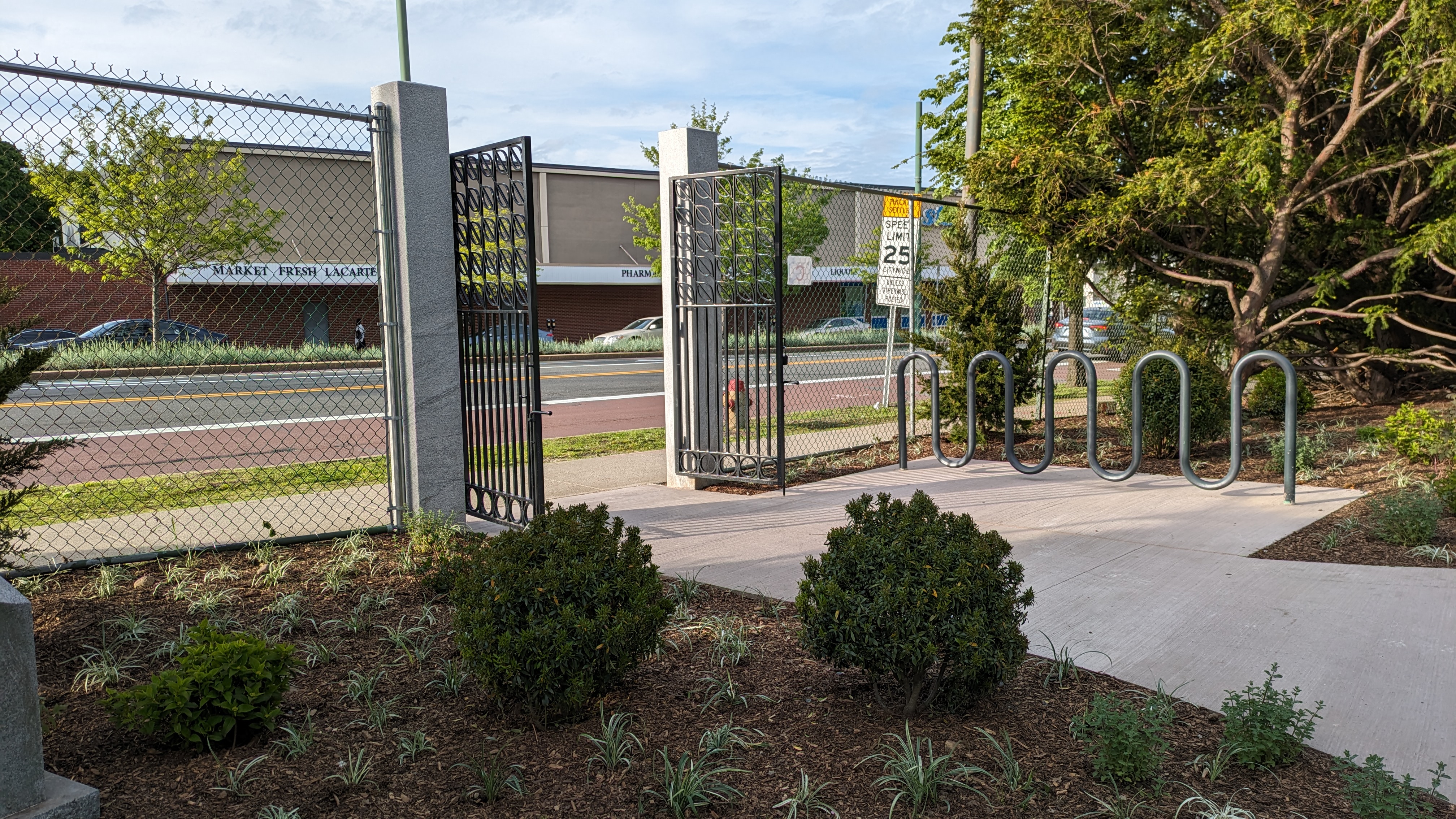
American Elm Gate – Mt. Auburn St. @ Belmont St.
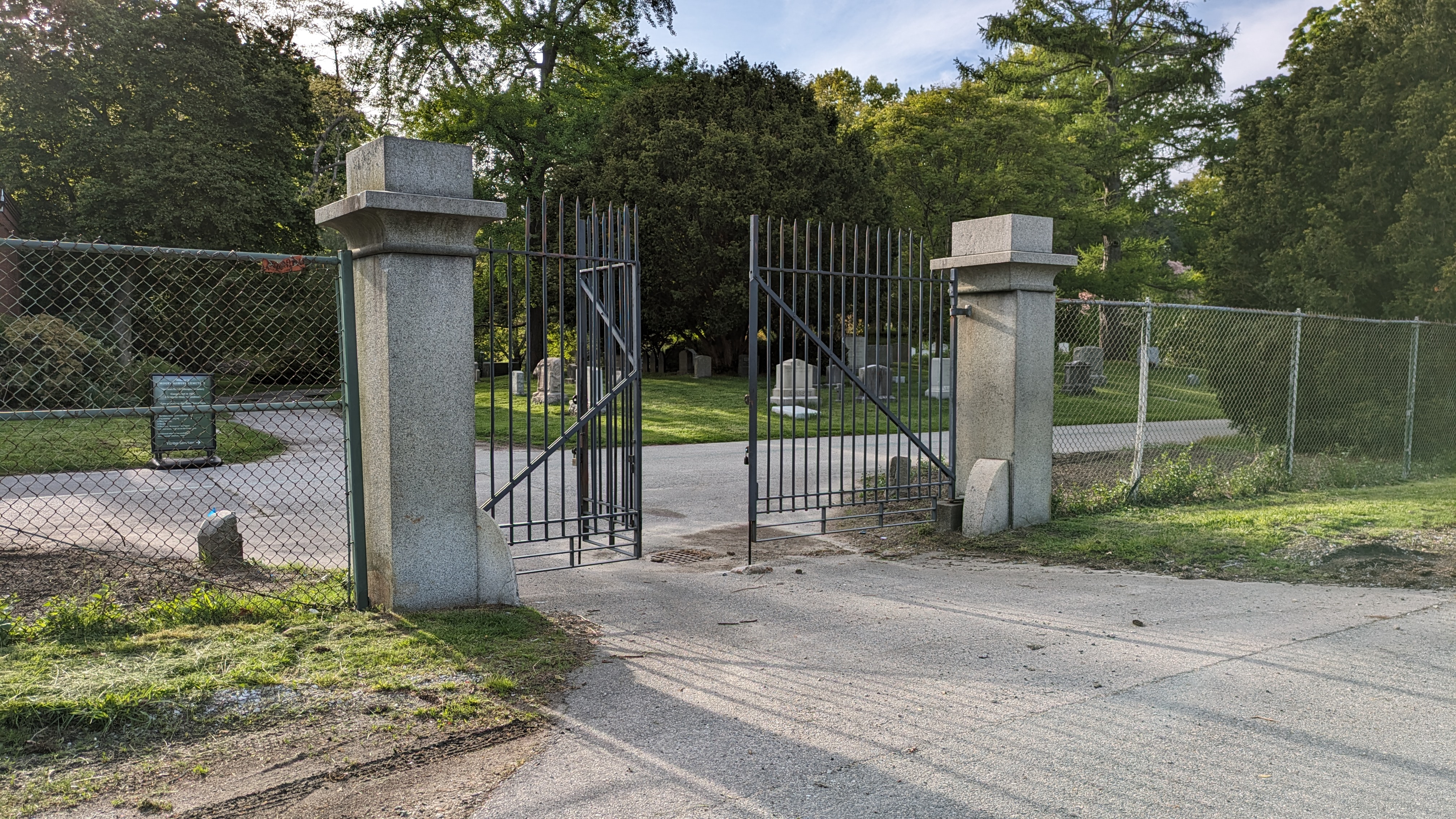
Coolidge Ave. Gate
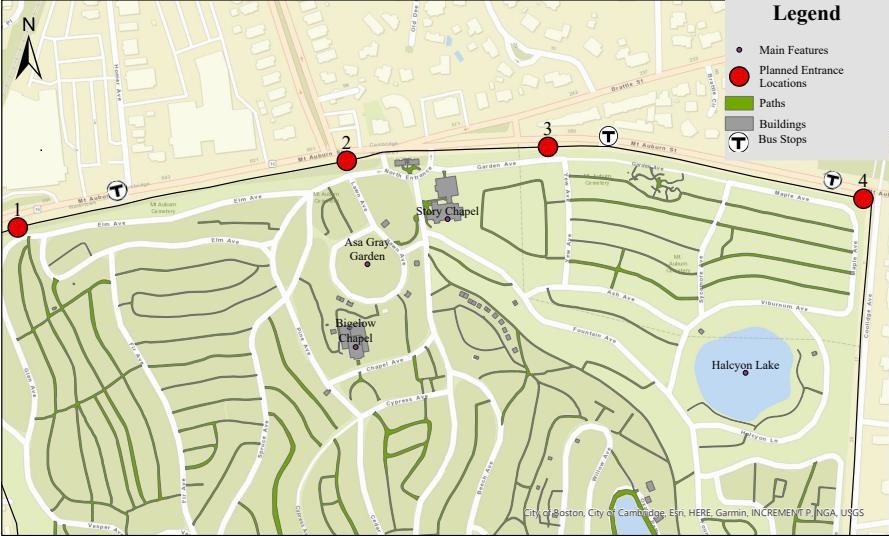
Pedestrian Gate Locations along Mount Auburn St.
Press
Watertown News: Mount Auburn Cemetery Adds New Pedestrians Gates in Effort to Welcome the Community Read >>
WBZ Radio: Mount Auburn Cemetery Opens Its Doors To More Visitors With New Entrances Read >>
Boston Globe: President Aims to Open Up Cemetery Read >> [Paywall]
Credit
Landscape Contractor: R.P. Marzilli & Company
Landscape Architects: Mathews Nielsen Landscape Architects
Structural Engineer: Lemessurier
Architect: William Rawn Associates
Gate Fabrication: Wovensteel Inc.
Press Release
Growing Community Access, Mount Auburn Cemetery Opens Five New Entrances
Local leaders and the community joined a ribbon-cutting ceremony on May 2 to open the Cemetery’s new entrances dedicated to pedestrians.
May 2, 2024 – Today, Mount Auburn Cemetery celebrated the opening of five new walk-in entrances to expand public access to the country’s premier garden cemetery. The new custom-designed gates along Mount Auburn Street will be open to the public 365 days a year to make the historic green space and active cemetery more welcoming and accessible to over 200,000 visitors it sees each year – and to the many more who will now be able to enter through the new entrances in Watertown and Cambridge.
The new entrance gates are located along Mount Auburn Street – opposite the intersections of Belmont Street, Aberdeen Avenue, and Brattle Street, and at the intersection of Mount Auburn Street and Coolidge Avenue. The entrances in Cambridge and Watertown are dedicated to pedestrians only and will help take pressure off the busy main Entrance Gateway serves as the primary entrance for motor vehicles.
“Mount Auburn Cemetery is a National Historic Landmark that is at an inspiring and pivotal time in its deep history,” said Matthew Stephens, President and CEO of Mount Auburn Cemetery. “And these new entrances reflect that and an organizational commitment to make Mount Auburn more welcoming, accessible, and safer for all – and are a reminder that more than an active cemetery, this is an urban oasis and community resource.”
The new custom-made gates at each entrance were designed locally by Boston architectural firm William Rawn Associates. Mount Auburn has installed new plantings to enhance the entrances at each gate, welcoming visitors with an array of horticultural improvements. Each entrance will also feature new bicycle parking.
Established in 1831 as an active cemetery and urban green space and public garden for visitors, Mount Auburn has a mission of protecting and preserving the history, residents, monuments, structures, stories, and resources of our designed landscape and our community of nearly 200 years.
More than 100,000 individuals are buried and remembered at Mount Auburn, including writers, educators, reformers, artists, scientists, and inventors still influential across Greater Boston, New England, America, and the world. Among them are Senators Henry Cabot Lodge and Charles Sumner, arts patron Isabella Stewart Gardner, poets Henry Wadsworth Longfellow and Robert Creeley, chef Joyce Chen, and broadcaster Curt Gowdy.
“We’re constantly looking for new ways to engage more of our community, and these new entrances are just one way we’re putting that commitment into action. Our founders created Mount Auburn as a landscape for commemoration without restrictions on religion or race and we remain committed to inclusion, diversity, equity, and accessibility,” said Stephens.
Mount Auburn Cemetery is open all year, and spring and summer are two of the best times to visit. The Cemetery offers engaging programming every season (events, tours, programs, the well-known SOLSTICE, an immersive winter art installation, and much more). Mount Auburn is hosting a series of events this spring and summer open to both Friends of Mount Auburn members and non-members, including Spring Bird Walks, Forest Bathing, Sunset Sound Meditations, and Community Connections Walks centered around celebrating the one-of-a-kind landscape, elderhood, and navigating loss. Learn more and register at MountAuburn.org.
About Mount Auburn Cemetery
Established in 1831 and home to more than 100,000 permanent residents, Mount Auburn Cemetery seeks to inspire all who visit, comfort the bereaved, and commemorate the dead in a landscape of exceptional beauty. We envision a world that celebrates life’s seasons, preserves natural beauty, and remembers human stories for our 200,000 annual visitors. Mount Auburn is a National Historic Landmark and welcomes the public at no cost, 365 days a year.

Comments